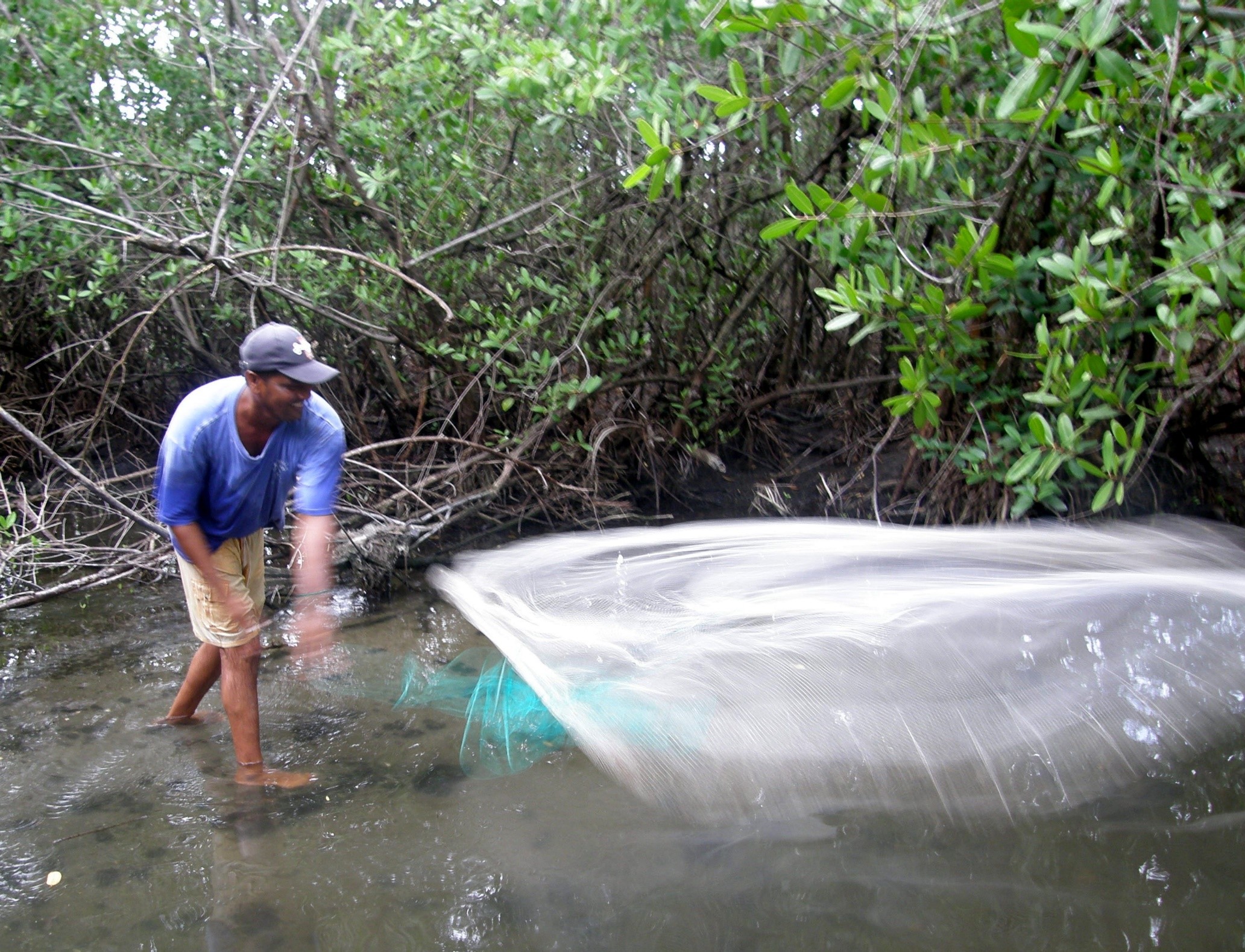New study finds that mangroves support over 4 million small scale fishers globally
Mangrove forests support millions of coastal fishers, and a new study has not only highlighted this importance but mapped how this fishing is spread around the world. World-wide, 38% of all small-scale fishers in over 100 countries fish in the mangroves and their adjacent waters. Their fishing provides critical food security for them and for many millions more who depend on them for food or work, including some of the world’s most vulnerable communities.
An international group of mangrove experts, representing fisheries knowledge from 11 nations, have worked together to develop a global model of fishing intensity in mangroves. This new analysis estimates that there are 4.1 million small scale fishers across 109 countries and territories participating in subsistence, small-scale, and near-shore commercial fisheries.
“We have long known that mangroves were important for fishing, but what this study has done is literally to put that fishing on the map” says the lead author of the paper, Dr Philine zu Ermgassen a senior researcher working with The Nature Conservancy and the University of Edinburgh, “and we have done this through a remarkable collaboration of experts. Their knowledge and observations were built up into a robust model of the many factors that drive fisher numbers in different places, and that model can then be used to predict fishing even far from the places where scientists have their observations”.
The study certainly confirms that mangroves are extremely important to fisheries, estimating that an average 38% of small-scale fishers in these countries operate in mangroves. “One of the most valuable aspects of this work comes from the maps, which tells us not only the numbers but the location of all this fishing” explains Dr Tom Worthington, from the University of Cambridge and again working with The Nature Conservancy. “The model uses our understanding of the distribution of mangroves in relation to coastal populations and markets, while also factoring in the role of other ecosystems, such as coral reefs, which also influence fishing patterns.”
The largest number of fishers were found in Indonesia, India, Bangladesh, Myanmar and Brazil, countries with large expanses of mangroves. However, the proportion of coastal fishers reliant on mangroves is even higher in some other countries, notably in West and Central Africa.
The model suggested not only that many fishers use mangroves, but also that some areas of mangroves are subject to very high fishing intensity: over 7% of the world’s mangroves support over 5000 fisher-days per year for every square kilometer of mangroves. As expected such numbers are linked to high human populations and countries such as India, Vietnam and China have some of the highest mangrove fishing intensities.
Mangroves are coastal and estuarine forests, flooded at high tides. They have been subjected to massive losses through conversion to aquaculture ponds, and to urban and agricultural uses. “We need to think of mangroves as fish factories” says Dr Mark Spalding, Senior Marine Scientist at The Nature Conservancy and another co-author: “the cost of past losses, in terms of livelihoods and food security for many of the world’s most vulnerable communities, has never been properly calculated, but this map highlights the risk and will help us to persuade governments and local communities to do more to protect, and even to restore, these precious ecosystems.”
About the model
The model identified factors relevant in determining the fishing intensity in mangrove areas through a Delphi process; an iterative process by which expert opinion is solicited anonymously and consensus (in this case on the drivers of fishing intensity in mangroves) is reached. The team sought globally relevant datasets for as many factors as possible, and developed a conceptual model which included: the number of small scale fishers nationally, population density, mangrove, coral reef and shallow shelf extent, distance between the population and the mangrove, accessibility to markets and storminess. The model was then mapped on a global scale to provide estimates of mangrove fisher number and the intensity of fishing in mangroves in 109 countries and territories globally.
Citation: Philine S.E. zu Ermgassen, Nibedita Mukherjee, Thomas A. Worthington, Alejandro Acosta, Ana Rosa da Rocha Araujo, Christine M. Beitl, Gustavo A. Castellanos-Galindo, Marília Cunha-Lignon, Farid Dahdouh-Guebas, Karen Diele, Cara L. Parrett, Patrick G. Dwyer, Jonathan R. Gair, Andrew Frederick Johnson, Baraka Kuguru, Aaron Savio Lobo, Neil Loneragan, Kate Longley-Wood, Jocemar Tomasino Mendonça, Jan-Olaf Meynecke, Roland Nathan Mandal, Cosmas Nzaka Munga, Borja G. Reguero, Patrik Rönnbäck, Julia Thorley, Matthias Wolff, Mark Spalding. Fishers who rely on mangroves: Modelling and mapping the global intensity of mangrove-associated fisheries. Estuarine, Coastal and Shelf Science, 2020, 106975, https://doi.org/10.1016/j.ecss.2020.106975.
Photo credit: Mark Spalding


